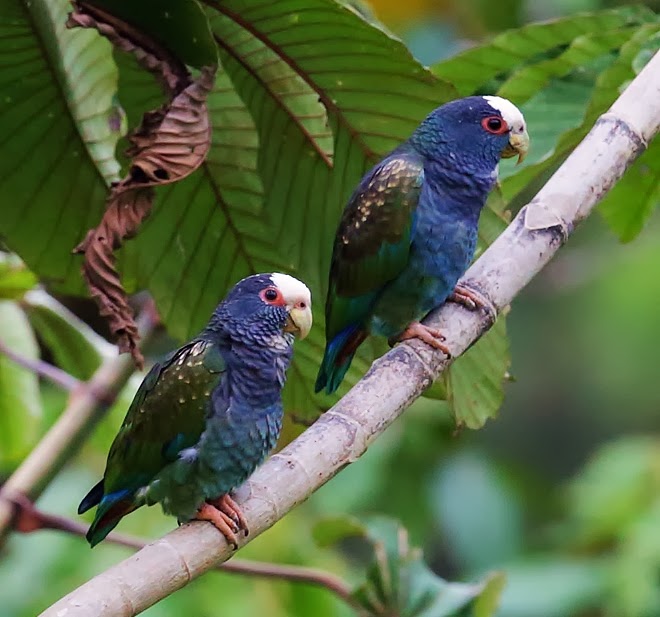 |
| Photo by Nick Athanas (Antpitta) |
Common name:
white-crowned parrot (en); maitaca-de-testa-branca (pt); pione à couronne blanche (fr); loro senil (es); weißkopfpapagei (de)
Taxonomy:
Order Psittaciformes
Family Psittacidae
Range:
This species is found in Central America, from eastern and southern Mexico to western Panama.
Size:
These birds are 23-25 cm long and weigh 220 g.
Habitat:
White-crowned parrots are mostly found in mountain rainforests, but also use rainforests in lowland areas, forest edges, dry savannas, second growths, cocoa plantations and arable land. They are present from sea level up to an altitude of 2.300 m.
Diet:
They forage in small flocks in the forest canopy, taking fruits, seeds and nut of various plants including Leguminosae, Araliaceae and Arecaceae. They also eat domestic crops such as maize, sorghum and commercial fruit plantations.
Breeding:
The white-crowned parrot breed in January-July. They nest in natural tree cavities, or in hollow palm stubs, where the female lays 3-6 white eggs. The eggs are incubated for 24-26 days. The chicks are fed by both parents and fledge 8-12 weeks after hatching.
Conservation:
IUCN status – LC (Least Concern)
This specie has a large breeding range and a global population estimated at 50.000-500.000 individuals. The population is suspected to be in decline owing to ongoing habitat destruction, but the white crowned parrot is not considered threatened at present.







